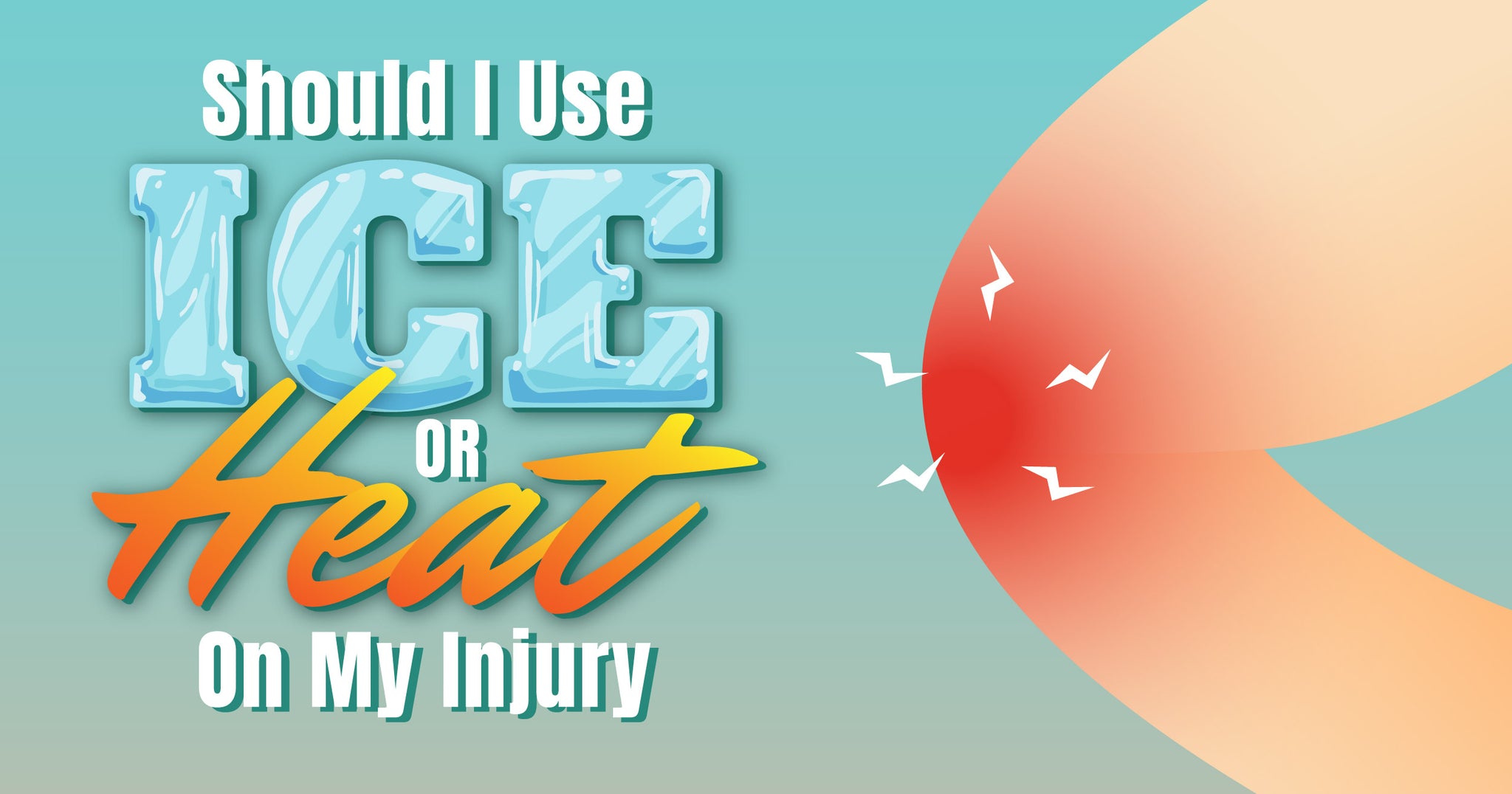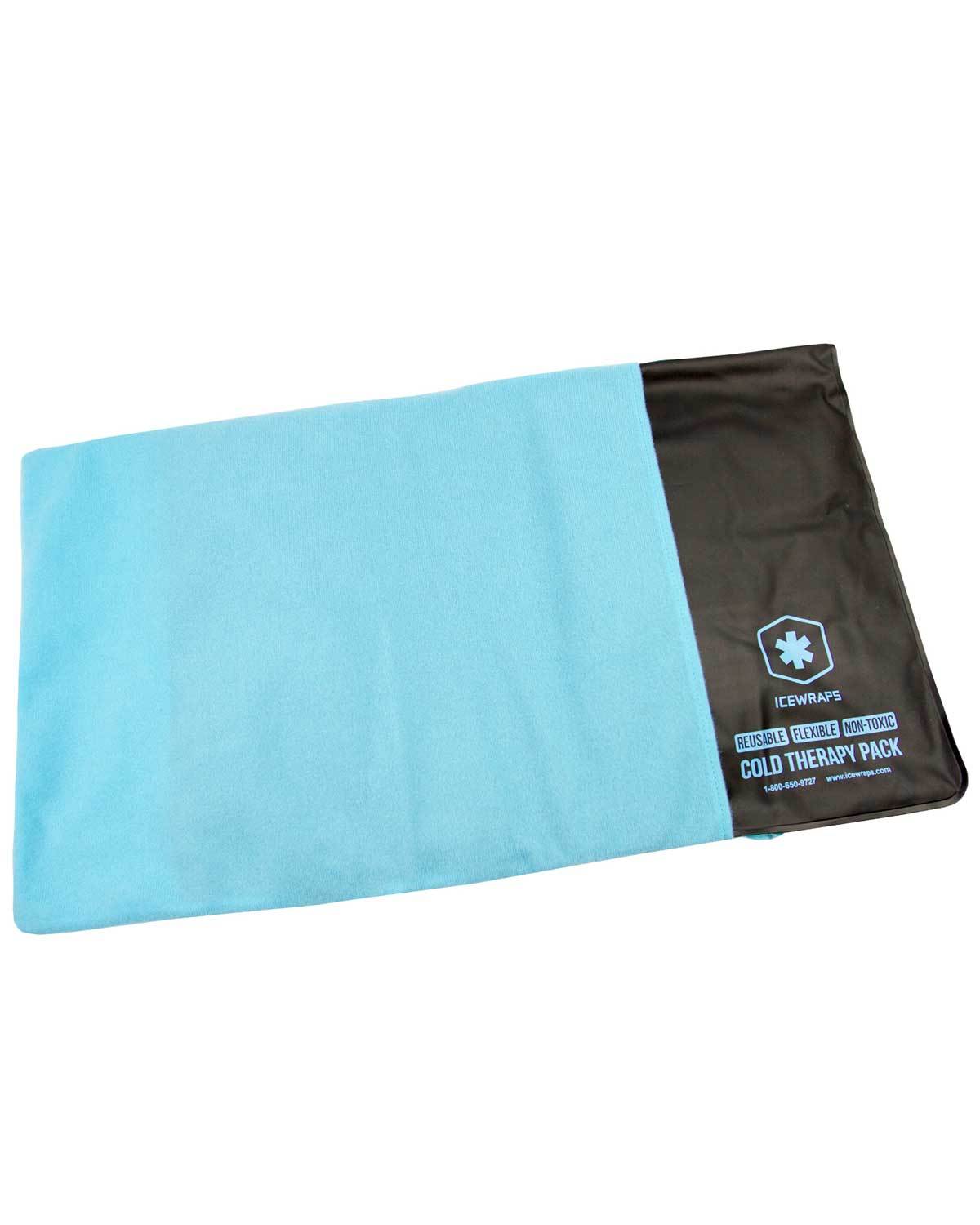Your Cart is Empty

A lot of confusion still surrounds the use of hot and cold therapy for inflammation, stiff muscles, joint pains, and other injuries. When is the right time to use a cold compress? Should you apply heat to those creaky joints? Are there any conditions that don’t recommend the use of either method?
We know you’ve got a lot of questions, so we’ve put together this useful article and accompanying infographic to help you out!

Before we dive into the ins and outs of hot and cold therapy, it's important to know how your body reacts to injury first.
Say you took a bad fall and sprained your ankle. The area would surely hurt, and in a few moments, you’d see physical changes starting to take place. You’ll most likely see redness and swelling. The injured area will also feel warm to the touch. It won’t be long until you’re unable to move or put weight on your ankle as well.
These signs are the result of the inflammatory process, the body's way of coping with injury.
Here's what happens:
When you get hurt, your body floods the area with fluid and blood cells to help get rid of the threat and repair damaged tissues. The blood vessels around the injury expand to increase the flow of blood, which causes redness and swelling. This, in turn, leads to pain and limited mobility due to nerve congestion.
Normally, your body should return to its usual state once the threat has been eliminated. The problem is, the inflammatory process can take a while. You’ll most likely suffer weeks or even months of pain and discomfort if you don’t do anything to minimize the inflammation.
Cold therapy is one of the best and cheapest ways to deal with inflammation. This is because low temperatures cause your blood vessels to constrict. Vasoconstriction slows down blood flow around the area and minimizes redness and swelling. It also offers pain relief by momentarily numbing the nerves around the area.
That being said, one can best benefit from cold therapy if the injury is pretty recent. Apply a cold compress to the area within 24-48 hours of the injury to minimize inflammation and to prevent the injury from getting worse.
It’s best for injuries like bumps, bruises, pulled muscles, joint sprains, and even as first aid for fractures.
Cold therapy isn’t only great for acute injuries, either. You can also apply cold therapy after strenuous physical activity. Professional athletes and gym enthusiasts are known to ice body parts or submerge in ice baths after intense games or workouts to help deal with pain and fatigue.
If you’ve just undergone a surgical procedure, you can also apply cold therapy to the area to hasten recovery.
If cold therapy is great for acute injuries, heat therapy should be your go-to method when dealing with chronic aches and pains like stiff joints and knotted muscles. Say you’ve got arthritis and have to deal with stiff joints in the morning, or when the weather is especially chilly. You can apply heat packs to the affected area to loosen those problematic joints.
Heat promotes the dilation of blood vessels, so it’s good for warmth and relaxation. If you often get muscle and period cramps, applying a hot pack can ease those contracting muscles.
Applying heat during the last stages of fracture recovery (when inflammation is no longer present and the bones are forming back together) can also be beneficial to the muscles affected by the cast.
Be careful to NEVER use heat therapy when there is inflammation present, though. It could worsen the swelling and lengthen your recovery time.
Too much of a good thing can still be harmful, so remember to use your heat and cold therapy packs properly.
When using either hot or cold packs, make sure to always have a cloth barrier between the pack and your skin to avoid potential tissue damage. Contact with the packs should not exceed 10-15 minutes at a time as well. Going beyond that time frame will not yield more benefits.

|
 |
 |
|
IceWraps 12x21 Oversize Cold Therapy Clay Pack with Cover
|
IceWraps Extra Large Neck Ice Pack with Soft Cover
|
IceWraps 10x14 Standard Cold Therapy Clay Pack with Cover
|
As a rule of thumb, always wait for the temperature of your skin to turn back to normal before applying the hot or cold packs again.
There are some conditions that don’t allow the use of either hot or cold therapy at all. Conditions like diabetes, Buerger’s disease, and stroke can impair a person’s ability to feel temperature, so using hot or cold therapy can do more harm than good. Using hot therapy in a hypertensive patient can also cause complications, so make it a point consult with your physician before using hot packs.
Hot and cold therapy is one of the easiest and cheapest ways to take care of muscle pains, injuries and joint problems. Knowing when to use either type of therapy can help you recover faster or prevent the injury from getting worse.
 |
|
 |
|
IceWraps 4" Round
(with cloth backing)
5-pack |
IceWraps 3x5 Gel Pack
6-pack |
IceWraps 3x3 Mini Gel Pack
6-pack |
If you found this article and infographic useful, don't forget to share it to your friends or family who might benefit from this valuable information!
What was your biggest takeaway from this article? Let us know in the comments below!
Comments will be approved before showing up.